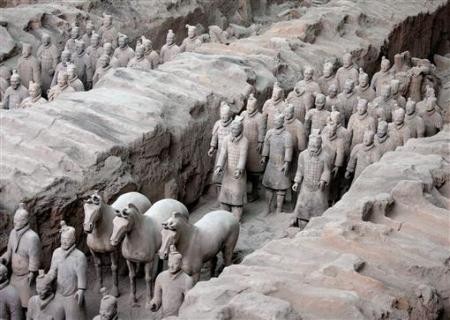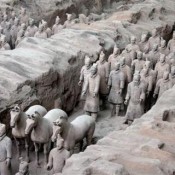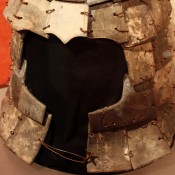The story of how China’s First Emperor, Qin Shi Huang built a mausoleum and shield it with an impressive group of teracotta statues depicting troops is much-told and well-known. What is not known is that the statues, of which 8,000 have been revealed so far, were carrying weapons, “wielded” lances, swords and crossbows. Of the latter, made of wood or bamboo rotten long ago, only the tips and triggers survived. Still these elements were enough for researchers to acquire a picture on the weapons’ making, use and role.
An international group of researchers recently managed to visually inspect and measure about 216 of the five-part crossbow triggers from the mausoleum. According to LiveScience staff writer Tia Ghose, who made a news piece on the research, the lack of wear on the metal pieces suggests the weapons were never used in actual battle, but were instead built solely for the tomb. Further analysis on the variation in the size and shape of the pieces showed that they were mostly uniform, something that indicates that the interlocking trigger parts were made in the same or nearly-identical molds and produced in small batches. The above info, in connection with analysis on the spots were triggers were found suggests that each batch of the trigger pieces was likely assembled in small cells, or workshops, perhaps headed by an overseer.
The model described above contrasts with the “assembly line” hypothesis that some archaeologists thought might have been used. However, it fits with the Emperor’s take on group management: this small-group organizing represents, in a nutshell, the general structural model the emperor imposed on the rest of society in ancient China.
“He abolished any privileges inherited by blood, and the population was divided in small groups that were collectively responsible for their adherence to imperial laws. For example, if someone in one of these groups committed a crime, all of them were held responsible, unless they reported the culprit and allowed them to be punished.”, stated research team member Marcos Martinón-Torres, an archaeologist at the University College London. “The cellular workshop model we postulate for the weapons manufacture in the mausoleum would have also offered useful flexibility for armies on the move,” he continues, adding that it is possible, but not certain, that manufacturing techniques seen in the Teracotta context were used by weapon makers for the Emperor of Qin’s real armies.




